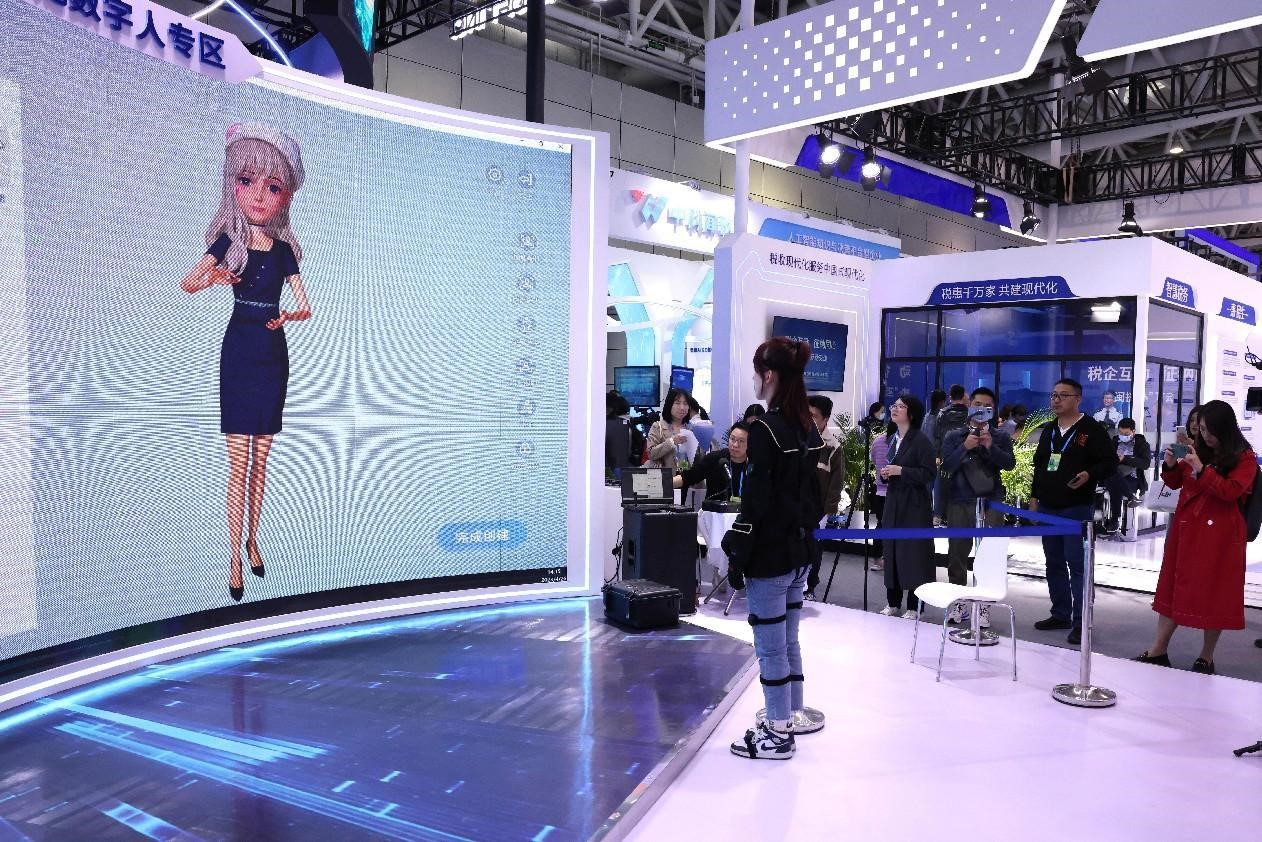
Ai Wenwen, an artificial intelligence-enabled digital tour guide launched by the National Museum of China. (Photo from the official website of the National Museum of China)
The National Museum of China, together with Chinese tech giant Tencent, has created an artificial intelligence (AI)-enabled digital tour guide that is able to introduce to visitors the 1.4 million antique items collected by the museum.
The digital human, Ai Wenwen, can update and enrich its knowledge base through machine learning and thus provide better services for visitors from across the world.
This is just a miniature of digital humans entering the daily life of the Chinese people. With the development of AI and virtual reality, digital humans are frequently seen at cultural and tourism sites providing personalized services. The application of digital human is becoming a new trend in the digitalization of the cultural and tourism industry.
Modeled on the flying Apsaras, the celestial singers and dancers of Mogao Grottoes' murals in Dunhuang, northwest China's Gansu province, virtual maiden Tianyu has been created to acquaint the world with Chinese heritage and culture.
The National Center for the Performing Arts has launched a goose-themed virtual mascot with tech giant Baidu that is knowledgeable and able to have conversations with visitors.
In east China's Zhejiang province, where Hangzhou, the capital of the Southern Song Dynasty (1127-1279) locates, virtual singer and host Gu Xiaoyu has been created to promote the culture of the Song poetry.
Shaanxi in northwest China also launched a virtual human Qin Xiaoya to make the local Qinqiang Opera known to more people in the world.
To make a digital human, model binding, motion capture, real-time rendering and other steps are needed, which call for the use of massive frontier technologies such as augmented reality and deep learning.
Shen Yang, a professor at the School of Journalism and Communication, Tsinghua University, noted that breakthroughs made in machine learning, deep learning and semantic understanding technologies, accelerated development of 3D imaging sensing, improved arithmetic and faster communication all provide a technical guarantee for the development of digital humans.

A digital human exhibition area is staged during the 6th Digital China Summit in Fuzhou, east China's Fujian province, April 26, 2023. (People's Daily Online/Wang Wangwang)
A report issued by the media big data center of the State Key Laboratory of Media Convergence and Communication under the Communication University of China divided the most applied and popular digital humans into three types, namely virtual idols, virtual employees and virtual hosts.
According to the report, these three types feature the highest commercialization value and are the most welcomed by enterprises and capital.
As application scenarios expand, digital humans will play a bigger role in the sectors of consumer goods, finance, real estate, property management, education and cultural tourism.
Some insiders noted that the industry of digital humans is still at an early stage of development and digital figures have similar appearances and vague characters. They believe differentiated development shall be one of the directions of the industry in the future.
The key to breakthroughs lies in the understanding of scenarios and effective technological upgrades. Relevant internet firms have already started their exploration in this regard.
"To meet the demand of the industry, we have upgraded our digital humans to intelligent digital humans," said Chen Lei, general manager of Tencent Cloud Intelligent Digital Human Products.
The team is committed to building an automated AI digital human factory, providing self-service options for the purchases, production and application of digital humans, he said.
By integrating voice interaction, semantic understanding, image recognition and other AI technologies, Tencent's digital humans have been "employed" as broadcasters and guides in a number of industries, including media, finance, transport, cultural tourism and government affairs
An insider noted that the digital human industry, as the "next big thing" that carries infinite imagination, is getting more intelligent, targeted and diversified, and will bring new opportunities and challenges.
In the era of AI, industry insiders believe that exploring judicial protection of rights related to frontier technologies and safeguarding the interests and rights of the developers, operators and brands of digital humans will further promote the healthy development of the network ecology and the sustainable development of the digital economy.
Editor: Guo Lili

